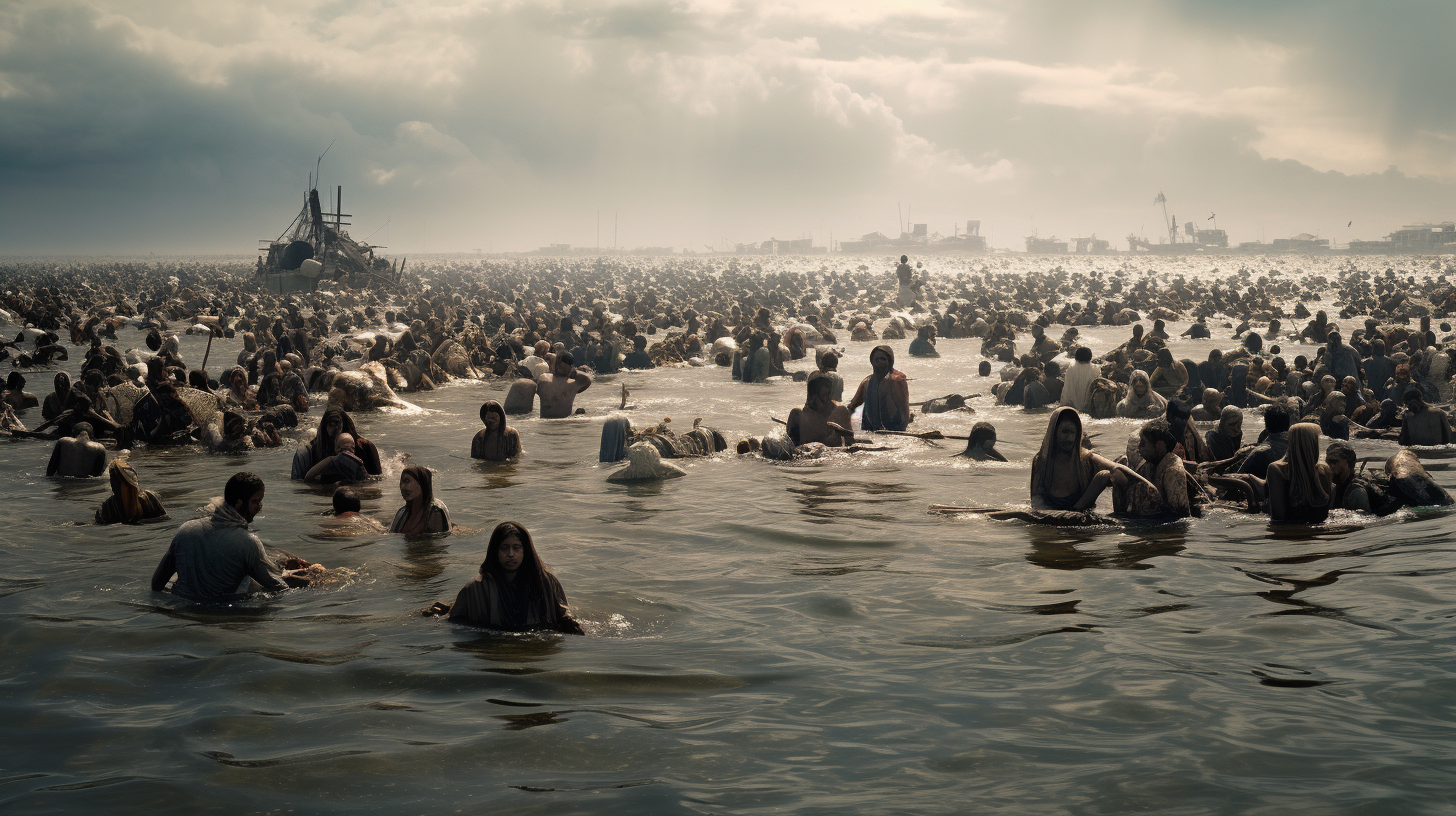The world is not what it once was. Vast landscapes have given way to a patchwork of ‘climate havens,’ pockets of barely hospitable land amidst environmental ruin. Our story unfolds in these dense nodes of human resilience, the last bastions of society, where humanity clings to survival with a tenacity that is both awe-inspiring and heart-wrenching.
The Haven Phenomenon: As the sea levels rose and the arable land shrank, cities became relics beneath the waves, and forests turned to deserts. From this decimation arose the ‘Haven Phenomenon,’ an involuntary experiment in human adaptation. These havens, refuges from the relentless face of climate change, became the only option for millions seeking shelter from the unstoppable force of a planet in upheaval.
Within the confines of these clustered sanctuaries, life operates under novel paradigms. Traditional laws of land and property rights have dissolved into the necessity of communal living. Governments and micro-societies function under survival-first doctrines, with every decision weighed on the scales of sustainability and survivability.
Human Density’s New Highs: In the havens, skyscrapers have been repurposed into vertical farms, stacking humanity in layers of survival. Personal space is an antiquated concept; privacy a luxury only the elite might whisper about. ‘Stack and pack housing’, once a term used pejoratively by critics of urban development, has become the claustrophobic reality.
But it’s not just about stacking bodies; it’s a multi-faceted struggle that encompasses emotional endurance, social restructuring, and psychological fortitude. The inhabitants of these havens must navigate not only the sheer physicality of their environment but the intense web of interpersonal relationships that come with living in a world without outsides.
Creative Strategies and Cultural Evolution: In response to these unprecedented densities, ingenious methods to maintain sanity have bubbled up. Rooftop gardens serve as communal refuges where a glimpse of a bird or the rustle of leaves provides a precious semblance of a bygone natural world. Education is transformed into ‘survival curriculum’, with children learning the art of hydroponics before history.
Chronicling the Congregated: One might wonder, what becomes of individual aspirations in such a collective? Diaries and personal chronicles have taken on a new role as outlets for personal expression. Through these writings, we glimpse the fierce human spirit undeterred by its cage of necessity. Stories of love, ingenuity, and even humor abound, proving that even as the earth grows inhospitable, the spark of humanity refuses to be extinguished.
The Echo of Warning: Yet, this congregation is not without cost. The psychological impact of such prolonged crowding is profound. Social conflicts simmer, occasionally boiling over in instances of unrest and violence. Disease, too, can spread like wildfire in these cramped quarters, though thankfully new medical protocols and containment strategies have evolved to mitigate these threats.
Still, as day bleeds into night and night into day, in a world where sunlight and starlight are blocked by the canopy of human existence stacked high, one wonders what future awaits these stoic survivors. Stories from the havens flow out like cautionary tales, whispers from a dystopian reality that we, the onlookers from a present yet untouched by such desperation, must heed.
The chronic overcrowding, forced efficiency, and radical communal living serve as a dark mirror of what our world could become if we continue to ignore the clarion call of our planet in peril. For now, the havens endure, swaths of humanity soldiering on. But the silent question lingers in the crowded air – for how long?
Survival of the crowded is not just a tale of caution but a testament to what humanity could become when pressed against the wall of existential crisis. As we document these pockets of human resilience, it is with a solemn hope that their stories are not a prelude to our collective future, but rather, a siren for change.
